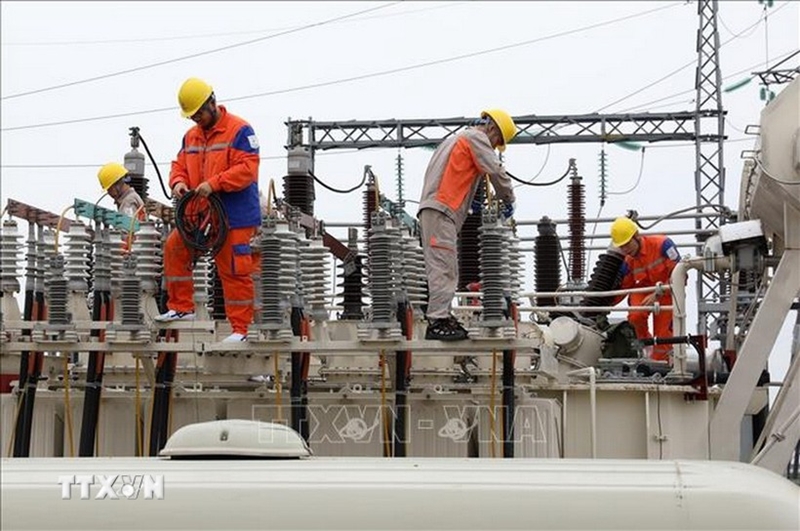According to the Vietnam Disaster and Dyke Management Authority, all national highways are now passable, and the Hanoi–Thai Nguyen railway line reopened at 18:30 on October 12. In Bac Ninh province, however, nearly 29,500 customers remain without electricity.
    |
 |
|
Bac Ninh province still has 29,400 customers without electricity. |
By October 13 morning, floodwaters have affected over 12,230 homes across the region, including 10,073 in Bac Ninh and 2,161 in Hanoi, representing an increase of 1,273 households compared with the previous day.
In Thai Nguyen, power outages affected part of the provincial-to-commune data network while public communications have been fully restored in Trung Gia and Da Phuc communes in Hanoi.
Across the provinces of Thai Nguyen, Bac Ninh, Cao Bang, and Lang Son, 550,805 customers lost electricity, of which 502,636 have been restored, leaving 48,169 households still without power. Authorities are closely monitoring 59 dyke-related incidents and continue emergency response measures.
Preliminary estimates put the total damage caused by the storm and its subsequent flooding at over 8.72 trillion VND (367.5 million USD), with the highest losses in Thai Nguyen (4 trillion VND), followed by Cao Bang (2 trillion VND), Bac Ninh (1.67 trillion VND), and Lang Son (1.05 trillion VND). Local authorities are continuing damage assessments and recovery efforts.
By 17:00 on October 12, the Central Relief Board under the Vietnam Fatherland Front (VFF) Central Committee had received more than 922 billion VND (39.1 million USD) in donations for recovery from Typhoons Bualoi and Matmo (Typhoons No. 10 and 11), of which around 470 billion VND has been allocated.
On the same day, the Prime Minister approved an additional 400 billion VND in aid for recovery, distributed to Thai Nguyen (250 billion VND), Cao Bang (50 billion VND), Lang Son (50 billion VND), and Bac Ninh (50 billion VND).
Meanwhile, heavy rainfall has continued in the central provinces of Dak Lak and Lam Dong, raising the risk of flash floods, landslides, and soil erosion. Accumulated rainfall in the region ranges from 10–20mm, with some areas exceeding 50mm, affecting numerous communes.
Authorities have issued risk warnings for flash floods, landslides, and ground subsidence due to heavy rains, emphasising the potential for severe environmental impact, threats to human life, local traffic disruption, and damage to residential and economic infrastructure.
Meteorological agencies recommended local authorities inspect vulnerable points, including blocked waterways and unstable terrain, to implement preventive and responsive measures.
Source: VNA